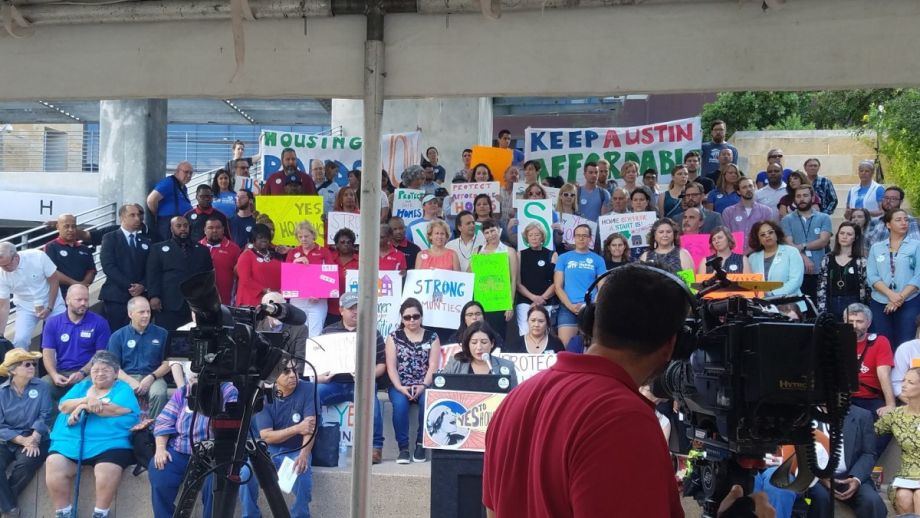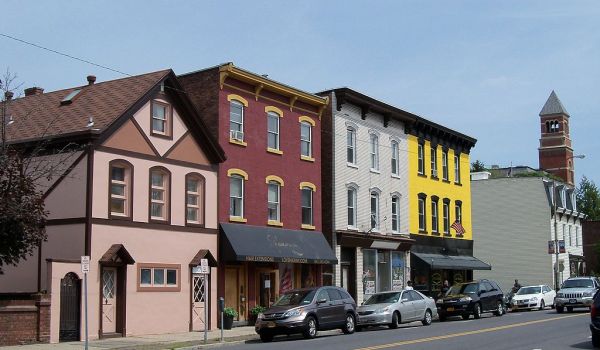It started with a more modest proposal.
In 2016, recognizing both the city’s strong financial position and a litany of critical investment needs, the Austin City Council appointed a Bond Election Advisory Task Force to develop a list of projects worthy of funding. Affordable housing was a priority, along with work related to flooding, transit, parks, libraries, and mobility. Katy Zamesnik and Carla Steffen, the two city staffers charged with helping the Task Force develop its proposal, say the total needs assessment ran to about $3 billion. As a starting point for discussion, they whittled that down to around $640 million, with around $85 million dedicated for housing.
Over months of discussion and a series of community meetings, the proposal grew. In the spring, the task force made a bond recommendation to the city council that included $161 million for affordable housing. But by that point, a bigger movement had taken hold.
“We went all in on $300 million,” says Madeline Detelich, a co-chair of the housing committee for the Austin Democratic Socialists of America, which joined a range of advocacy groups to push for the biggest housing bond in the history of the city. They made buttons and stickers reading “300 or Bust,” Detelich says. “It really raised the limits of what people thought was possible.”
Eventually, the city council settled on a proposal that would dedicate $250 million for affordable housing as part of a larger $925 million bond referendum that voters will face in November. The housing proposal — Proposal A — is the largest investment voters will see on the ballot. If approved, most of the money would be split between land acquisition for future affordable housing development and a rental assistance program, with $28 million each for affordable homeownership and home repair programs.
The proposal follows on previous housing bonds in 2006 and 2013 worth $55 million and $65 million, respectively. The success of those earlier bonds, plus the continued tightening of the housing market due to the city’s growth, has created an opportunity to ask voters for a much bigger investment, advocates say.
“In the past, the city has succeeded in getting voter approval for 50- and 60-odd-million-dollar housing bonds and those have done extremely powerful work, but not at a great enough scale to address our affordable housing deficit, our segregation issues, and the displacement that’s occurring in our communities,” says City Council Member Gregorio Casar, who helped lead the push for a bigger housing bond in 2018.
Austin is hoping to create 135,000 new housing units in the next ten years, according to a Blueprint written by the city’s Department of Neighborhood Housing and Community Development. The city is currently facing a shortage of 45,000 units for residents earning less than 60 percent of median family income, according to the Blueprint. Casar says the lack of affordable housing is a threat to economic diversity in Austin, which is the very thing he says so many Austinites value most about the city.
“If we don’t step up and fight for our community, then we’d be taking that for granted,” Casar says. “We know that the path we’re on is a scary path, where we could become a city just for the wealthiest among us.”
While the city has been developing the bond proposal, another task force has been charged with creating a set of anti-displacement recommendations aimed at chipping away at racial segregation in the city, as Next City has reported. If it’s approved, the largest portion of the housing bond — $100 million — will be dedicated to acquiring land for future affordable housing development. Those acquisitions will be targeted in areas that are likely to face gentrification in the near future, says Austin Mayor Steve Adler.
“We find that if you wait too long, then the price of land goes up and providing long-term affordability and mixed-income housing becomes really expensive,” Adler says. “You have to get out in front of gentrification.”
Adler admits that even a $250 million bond won’t match the full scale of the affordable housing need in Austin. But he and other proponents note that cities in Texas aren’t able to rely on help from the state or federal governments to address many of their challenges.
“If we had no bond at all it would be catastrophic,” says Nora Linares-Moeller, executive director of HousingWorks Austin, a nonprofit advocacy group became the “steward” of the Keep Austin Affordable bond slogan in between the 2013 and 2018 elections. “We are moving in the right direction. Everyone is talking about it.”
Detelich acknowledges there are limits to the bond solution, especially when compared to a more radical vision of fully public housing that many of her fellow party members hold dear. But she’s especially excited about the land acquisition portion of the proposal. And in door-to-door campaigning, members have found renters to be especially receptive to supporting the bond, because the problem it’s trying to solve is so obvious.
“It looks like it’s going to pass, and we’re hopeful that when it does, it doesn’t just pass but it passes with 70 percent or 80 percent support,” Detelich says. “We’re just really excited to get those results in and see what we can do with that. If everything goes according to plan, and this bond ends up being really popular, we’re hoping we can take that back to the city and say, ‘This is an issue that people are really concerned about and willing to put real money toward. So let’s keep going with this.’”

Jared Brey is Next City's housing correspondent, based in Philadelphia. He is a former staff writer at Philadelphia magazine and PlanPhilly, and his work has appeared in Columbia Journalism Review, Landscape Architecture Magazine, U.S. News & World Report, Philadelphia Weekly, and other publications.
Follow Jared .(JavaScript must be enabled to view this email address)
















